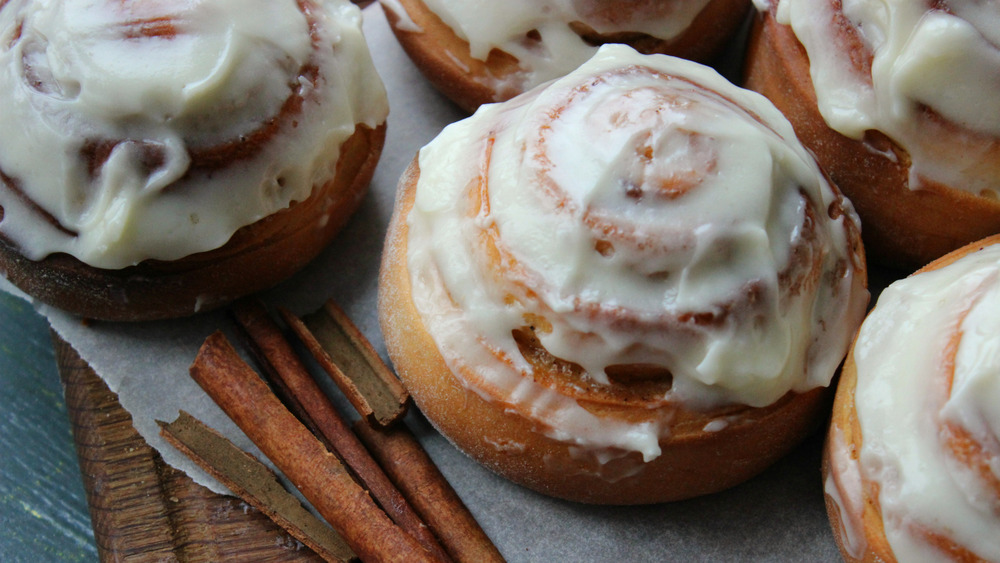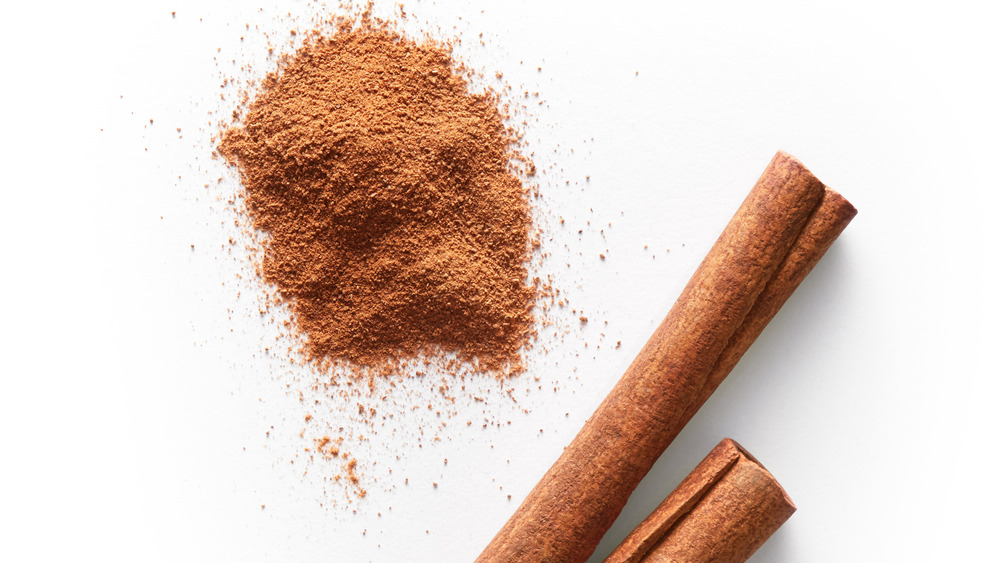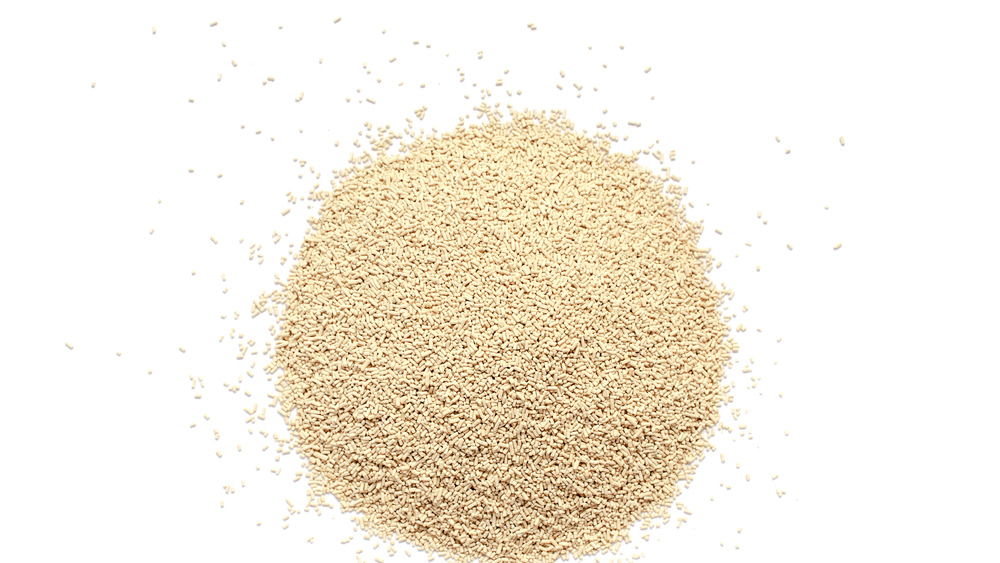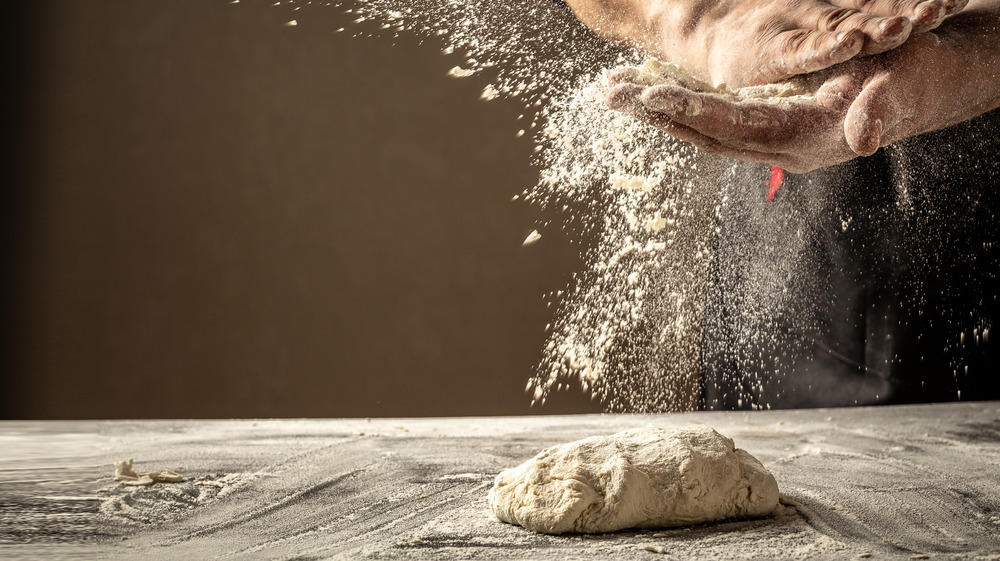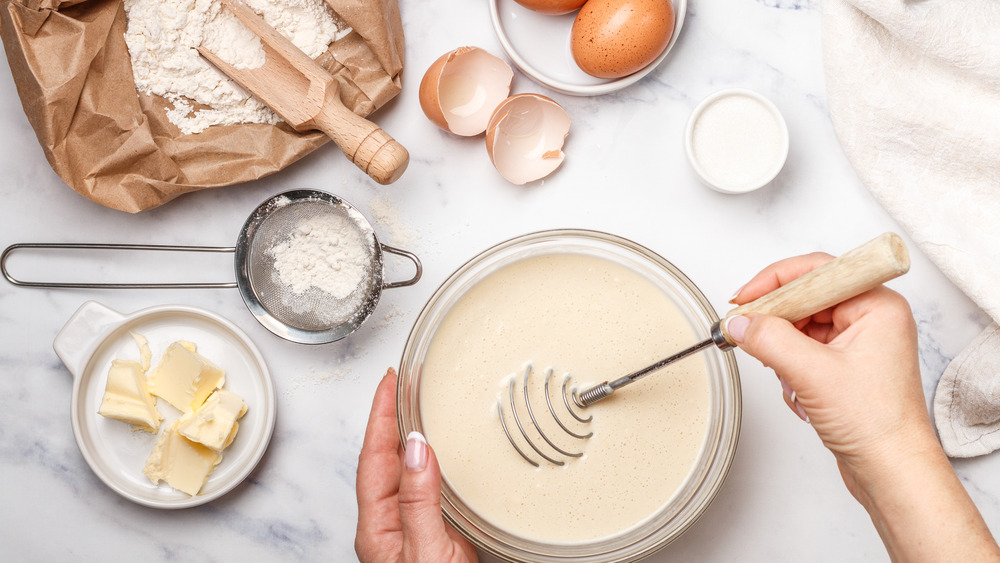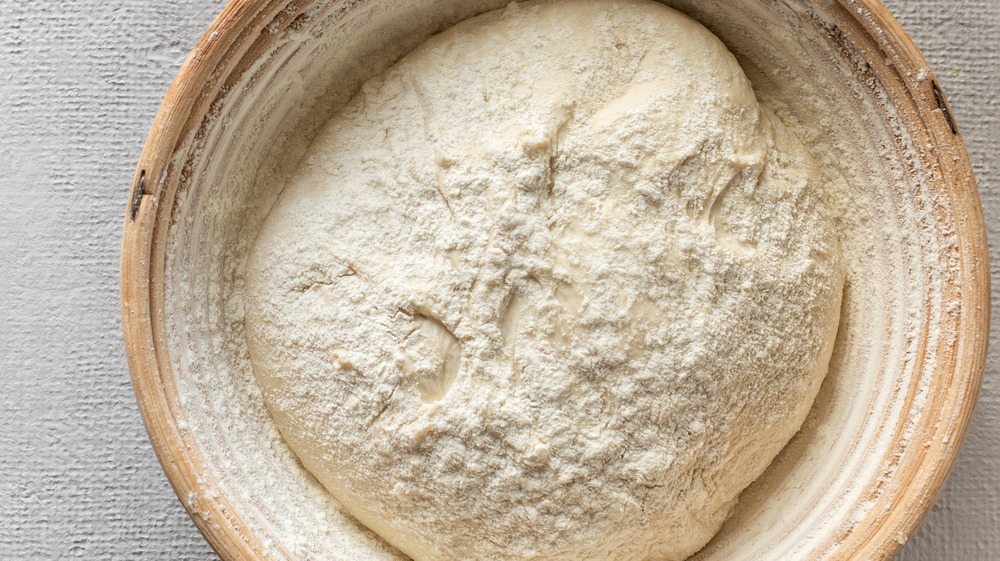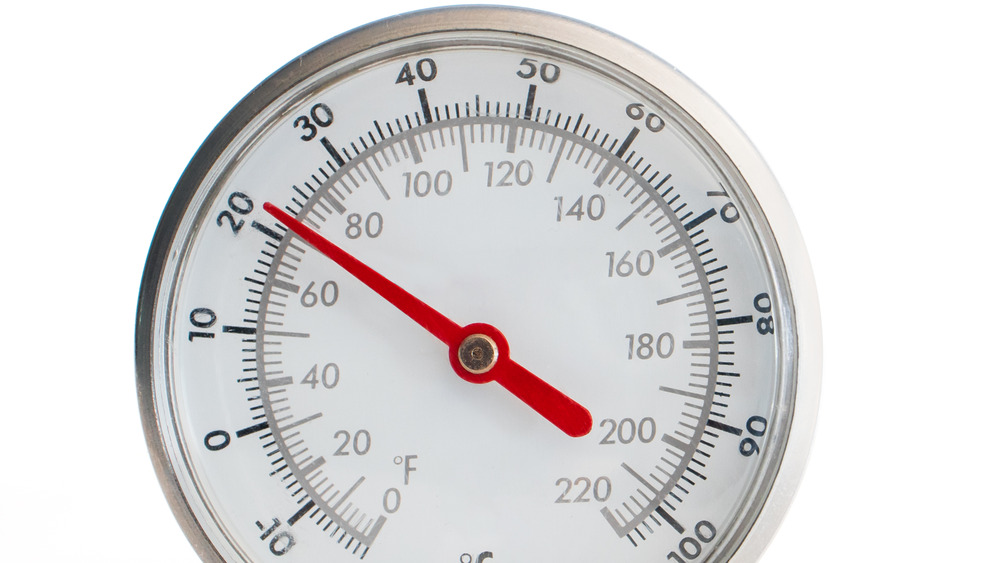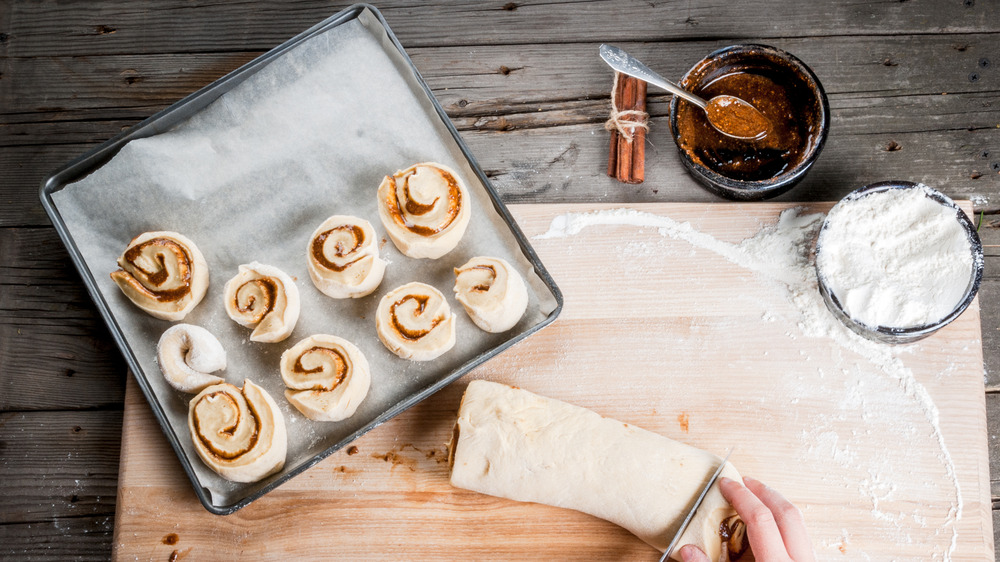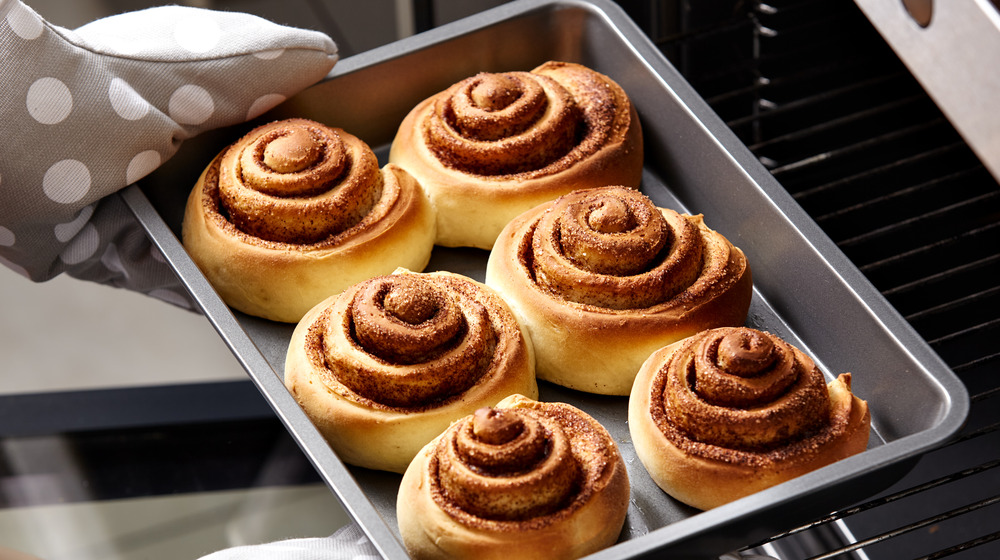Mistakes Everyone Makes When Making Cinnamon Rolls
Whether grabbing one from Cinnabon or baking your own at home, cinnamon rolls are delicious and a special treat. When attempting to make them at home, though, things may start to feel a bit complicated. Whether you have been baking for years, or just starting out, baking is a unique form of cooking in that it's very much an art and a science — while someone can go wild and add varying amounts of spices and herbs to a sauce or stew, baking is all about precision, and a lot can go very wrong, very easily!
Accuracy is important. Be sure you are following whatever recipe you are using precisely. "Dry measuring cups for dry ingredients and liquid measuring units for wet ingredients. A lot of people think you can use them interchangeably but you may run the risk of making something different if used incorrectly," Jasmine Macon, pastry chef at Leah & Louise in Charlotte, North Carolina, told Mashed.
And it is more than using the right ratios of the correct ingredients, from temperature and humidity to ingredient quality and technique, there's a lot that goes into those beautiful gooey cinnamon buns before they end up on your plate. We spoke to some baking pros about common mistakes to avoid if you want the ultimate tray of cinnamon rolls.
You didn't use quality cinnamon for the cinnamon rolls
When making cinnamon rolls, most people focus on the dough: Did it rise? Is it too dense? Is it flaky? Emily Ackerman, Lebanese-American food blogger and founder of A Pinch Of Adventure told us the one thing that many people overlook is the quality of cinnamon used. "Much of the cinnamon that is sold in chain grocery stores comes from the cinnamomum cassia tree and is not considered high quality," Ackerman said.
Why go to all the work of making homemade cinnamon rolls only to add cheap cinnamon?! On the other hand: "Ceylon cinnamon is from the cinnamomum verum tree and is considered a sweeter cinnamon that is perfect for desserts, and in this case, for the best tasting cinnamon rolls," said Ackerman. "The smell of true Ceylon cinnamon alone delineates it as superior, as opposed to cinnamon from the cassia variety."
Overfilling the cinnamon (or any!) filling is also a common hiccup. "I know you like that delicious cinnamon butter – me too," Tracy Wilk, chef-instructor at the Institute of Culinary Education, told Mashed.
But overfilling will cause your buns to burst, leak and just become a hot mess. Instead: "Do a gentle spread of your filling and roll it up into a tight log. Slice, proof, and bake –- and then if you want more –- add it as a sauce or a flavored glaze," Wilk said. This will keep your cinnamon buns as tasty as they are beautiful!
You killed the yeast
Yeast may seem like a pretty minor part of a cinnamon roll — most recipes call for a rather small amount, but yeast plays a big role in baking that roll! A trait that is very associated with a great batch of cinnamon rolls is that delicious light and fluffy texture. You want a roll that perfectly puffs when baking to give the roll a nice dome shape.
However, that's where yeast comes in. No live yeast means heavy, flat bread. No one wants that in their pastry! "Be sure to keep water or milk temperature below 140 F or, if you're without a thermometer, be able to comfortably stick your finger in the liquid if you are baking at home," Cinnabon corporate chef, Chef Jennifer Holwill, told Mashed. This trick will help ensure you don't kill the yeast, and as a result, will have a roll deserving of dessert!
Not kneading the cinnamon roll dough enough
Whether not rolling the dough out thin enough, or not kneading the dough for the right amount of time, this can make a big difference. "Dough should be smooth on the surface after fully kneading, which means the gluten structure is well developed," Holwill, said.
How to do it right: To help ensure smooth dough that is well kneaded, there are two things you can do. One: "Use a high-quality wheat flour with a high protein content, such as bread flour. Cake flour has low protein –- it's best to avoid that," said Holwill. The high-protein content helps contain the gas emitted from the yeast, which gives your dough structure and strength. Cake flour is too weak to contain the gas from the yeast, leading to your dough collapsing.
And two: "Add flour, about 1/4 a cup at a time, and mix well after each addition," said Holwill. Pacing the addition of flour will help get a thorough mix and smoother dough.
Overmixing is as bad as undermixing
Cinnamon rolls can seem like quite the task when you are making them from scratch but, in reality, if you follow the correct steps and know when your dough is done mixing/kneading, then you will have delicious cinnamon buns with the perfect texture. "Over mixing/kneading can cause a tough cinnamon bun texture," Madison Koutroba, Pastry Chef at Baketivity, told Mashed.
Under mixing, on the other hand, results in a doughy weak bun. "When you are mixing and kneading, the number one thing to look out for is the texture of the dough," Koutroba added. "If the dough is too sticky and visibly sticks to the sides of your bowl, it needs more time being handled. As soon as the dough pulls away from the sides of the bowl while still slightly sticky, it's good to go."
Koutroba told us then it's time to be patient and allow the dough to rise. "Most recipes recommend an hour for the dough to rise in a covered and room temperature environment and then again for another 15-30 minutes after they have been rolled up and placed in your baking dish." Each of these two rising sessions is extremely important and crucial to the outcome of perfectly tasty cinnamon buns.
Your cinnamon roll dough was under proofed
Dough needs proofing time for the yeast to grow, giving the bread a nice texture and flavor. According to Holwill, "Most doughs are best when they are double proofed." Let the dough rise in a warm, moist environment. "One of the best parts of dough making is punching the dough down in between proofing! After your first mix, proof the dough in a warm, moist environment until it doubles in size" Holwill advised. After it has proofed once –- punch it down and return it to the same warm, moist environment for the second round of proofing.
Tracy Wilk, chef-instructor at the Institute of Culinary Education, agrees, and told Mashed she recommends having your buns grow to about 80 percent of their size ... not more and not less. "The last "puff" will happen when they go in the oven, which we call the "oven-spring."
Proofing them "just right" allows for the fluffiest, melt-in-your-mouth, delicious texture. There's no certain set time for proofing. It's more of a learning curve for working with the dough and learning what it should look like when it is proofed just right. "You also can gently press down on a portion of your dough, and a small indent should hold –- that means your dough is ready to go!" Wilk said.
Not considering the environmental factor on the dough
A big mistake made with making homemade cinnamon rolls is not taking the ambient air humidity and temperature into account. Baking any loaves of bread or sweets with yeast is as much of a science as it is an art. "When proofing the dough, if the room is too hot or humid, the dough could rise at an accelerated pace causing the rolls to dip," Jessica Randhawa, the head chef behind The Forked Spoon, told Mashed.
Randhawa said if the room the cinnamon rolls are in is cold and dry, the rolls could take longer to proof/ferment, resulting in denser rolls that did not rise to their desired potential in the time assigned by the recipe before the next step. Both of these temperature and humidity factors are not generally accounted for with most cinnamon roll recipes. "This is why having a thermometer and humidity sensor near the dough when proofing will help bring scientific facts back into the dough-making process for a better homemade cinnamon roll outcome," Randhawa said.
Don't skimp on ingredient quality
We know cinnamon rolls call for "rich" ingredients like butter and eggs, so, you want to make sure you don't cut any corners on quality with those ingredients.
"I always recommend using products from free-range, humanely raised animals that live on small family farms, whom I love to support as well," Jocelyn Drexinger, owner of Mint and Mallow and baker at Nellie's Free Range, told Mashed.
"Using farm-fresh, free-range eggs from hens who are able to enjoy a healthy diet that includes protein-rich bugs and grubs out in the pastures, will translate to a more flavorful, deeply colored yolk and therefore a tastier cinnamon roll," Drexinger said. "On top of that, slow-churned butter produced from grass-fed cows will also add a more complex and robust flavor to your rolls. If you can find an 84 percent butterfat option instead of the typical 80 percent — even better!" You'll get an extra touch of that beautiful browning, and a more enriched flavor all around.
Once you have your high-quality ingredients ready to go, Drexinger said your focus should be making sure everything is at the same temperature before adding it to your dough. "Soft butter (especially if you have an extra-creamy 84 percent butterfat variety), will seamlessly incorporate into your dough, and those warmed up eggs and liquids will make sure your yeast can stay in a warm environment to help you get a beautiful rise and puff out of your final cinnamon roll spirals."
The cinnamon rolls came out too doughy
Cinnamon rolls should be light and fluffy. They'll be rich from the ingredients, but they shouldn't be heavy or dense. Sometimes, though, that's not the case.
Are your cinnamon rolls too doughy? Jenni Field of Pastry Chef Online shared with us that it could be because you packed them in the pan too tightly. "This results in them getting super crowded as they rise and sometimes pushing up like volcanoes while they bake, making them doughy and dense in the centers," she said. Thankfully, this is something that can be easily remedied next time.
So here's what you do: "Avoid this by giving pull-apart cinnamon rolls a good 1" of space all around, and more if you like 'stand-alone' cinnamon rolls. Bake 'stand-alones' on a sheet tray with 2"-2 1/2" between the rolls. Bake pull-aparts in a standard 9"x13" pan with 1/2-1" of space between each roll," Field recommended.
